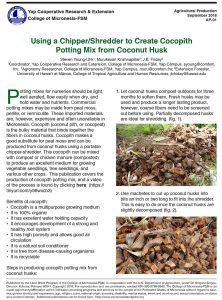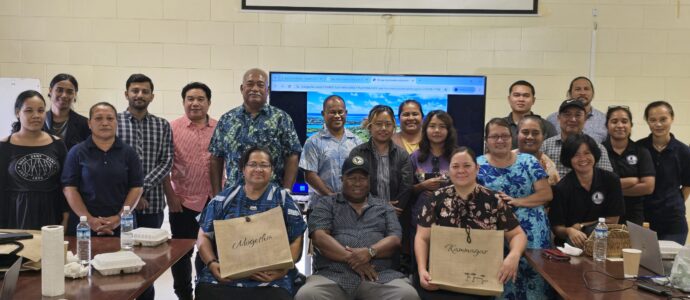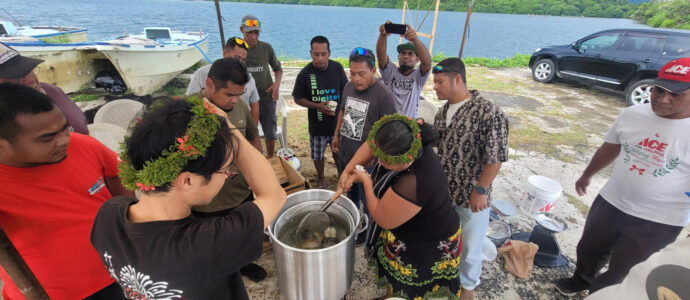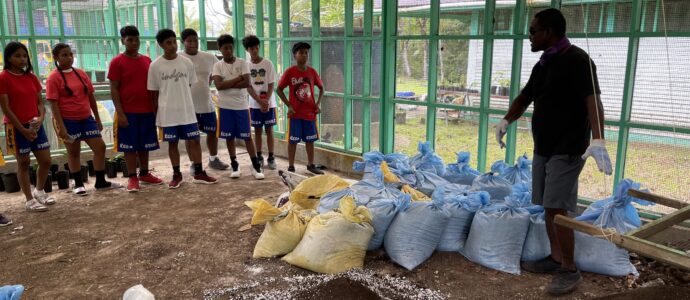Yap, FSM. Dr. Murukesan Krishnapillai, Researcher/Extension Specialist, Cooperative Research and Extension. YAP, FSM.
As with any garden, soil preparation is what really counts when it comes to growing successfully in containers. It’s the foundation. It’s the staff of life. In other words, selecting a right potting mix for your plants is key to success. Skimp on the soil, you will get weak, non-productive crops that require more work to maintain and are susceptible to all kinds of pest problems. 
For years, Yap CRE has been promoting container gardening among communities for growing vegetables owing to some obvious challenges with native soils for field cultivation. The two predominant types of soils – upland soils underlain by volcanic material and upland soils underlain by schist – have different properties and therefore, behave differently and they need different management strategies. In our pursuit of finding a local alternative to soil, we found that coconut husk as an ideal medium for growing plants in containers. Coconut husk is made up of natural fibers called coir along with parenchymatous, spongy material coirpith that binds the fiber in the husk. Being made up of sclerified tissue, coconut fiber as such doesn’t retain much water at all. However, it does two things in the media: it creates aeration through voids it leaves in the coir, and it also gives the media optimal structure to further prevent compaction, which is important to having a healthy root zone. The pith acts like micro sponges where the moisture is stored. The fiber and the pith together make a great media with an excellent air to water ratio.
Over the years, we standardized a method to make a suitable potting mix from discarded coconut husks (click to see fact sheet). See the link for a video of preparing potting mix from coconut husk. We thank Dr. J.B. Friday of CTAHR, University of Hawai‘i at Manoa for assistance with the flyer and for producing the video.





